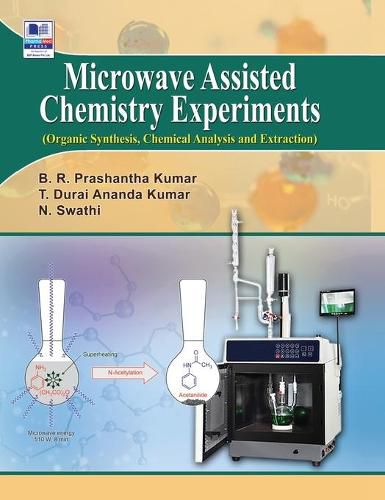Readings Newsletter
Become a Readings Member to make your shopping experience even easier.
Sign in or sign up for free!
You’re not far away from qualifying for FREE standard shipping within Australia
You’ve qualified for FREE standard shipping within Australia
The cart is loading…






This title is printed to order. This book may have been self-published. If so, we cannot guarantee the quality of the content. In the main most books will have gone through the editing process however some may not. We therefore suggest that you be aware of this before ordering this book. If in doubt check either the author or publisher’s details as we are unable to accept any returns unless they are faulty. Please contact us if you have any questions.
At present the development of chemical and biological sciences is enormous, hence it is anticipated that the demand for the chemists may increase in the near future. Adequate knowledge on the modern techniques such as Microwave chemistry and Computerized tools is essential to have good research background for anybody to be competitive. Microwave-assisted organic reaction enhancement (MORE), an adventurous technique improves the energy efficiency and becomes the structured tool for achieving green chemistry principles in the synthesis of active pharmaceutical ingredients (APIs) and drug intermediates. In light of these inputs, this book titled Microwave-Assisted Chemistry Experiments (Organic synthesis, Chemical analysis and Extraction) , covers the principles and applications of microwaves in the field of organic synthesis, organic analysis and natural product extraction in a comprehensive and user friendly way. This book serves as a resource for students of chemistry including pharmaceutical chemistry graduates and as a reference guide for the research scholars.
Salient features of this book are
The reaction mechanisms component of each experiment adds real interest to revise key aspects of organic chemistry related to microwaves.
The comparative study of microwave methods vs conventional methods is reported.
Special guidelines for the optimization of microwave reaction conditions are also important element of this book.
$9.00 standard shipping within Australia
FREE standard shipping within Australia for orders over $100.00
Express & International shipping calculated at checkout
This title is printed to order. This book may have been self-published. If so, we cannot guarantee the quality of the content. In the main most books will have gone through the editing process however some may not. We therefore suggest that you be aware of this before ordering this book. If in doubt check either the author or publisher’s details as we are unable to accept any returns unless they are faulty. Please contact us if you have any questions.
At present the development of chemical and biological sciences is enormous, hence it is anticipated that the demand for the chemists may increase in the near future. Adequate knowledge on the modern techniques such as Microwave chemistry and Computerized tools is essential to have good research background for anybody to be competitive. Microwave-assisted organic reaction enhancement (MORE), an adventurous technique improves the energy efficiency and becomes the structured tool for achieving green chemistry principles in the synthesis of active pharmaceutical ingredients (APIs) and drug intermediates. In light of these inputs, this book titled Microwave-Assisted Chemistry Experiments (Organic synthesis, Chemical analysis and Extraction) , covers the principles and applications of microwaves in the field of organic synthesis, organic analysis and natural product extraction in a comprehensive and user friendly way. This book serves as a resource for students of chemistry including pharmaceutical chemistry graduates and as a reference guide for the research scholars.
Salient features of this book are
The reaction mechanisms component of each experiment adds real interest to revise key aspects of organic chemistry related to microwaves.
The comparative study of microwave methods vs conventional methods is reported.
Special guidelines for the optimization of microwave reaction conditions are also important element of this book.